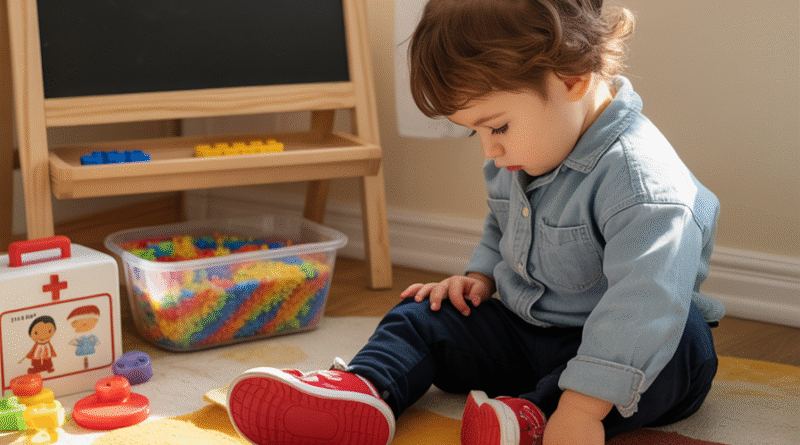The Best Home Learning Tools for Preschoolers
Preschoolers are full of curiosity and energy, and the right tools can help channel that energy into meaningful learning. At this stage, children learn best through play, hands-on exploration, and interaction with their environment. With a few simple, well-chosen learning tools, you can transform your home into a rich early education environment that supports growth across all developmental areas.
In this article, we’ll explore the best learning tools for preschoolers that are fun, educational, and parent-approved.
Why Learning Tools Matter
Learning tools give structure to curiosity. They support cognitive, social, emotional, and physical development while making learning feel like play. They also help children:
- Strengthen fine and gross motor skills
- Develop early literacy and math concepts
- Practice focus and problem-solving
- Explore creativity and self-expression
- Build independence and confidence
1. Magnetic Letters and Numbers
Why it’s great:
Magnetic letters and numbers are a versatile way to explore the alphabet and early math. Preschoolers can stick them to the fridge or a magnetic board, helping reinforce recognition and sequencing.
Learning benefits:
- Letter and number recognition
- Spelling and phonics foundations
- Hands-on counting and sorting
Activity idea:
“Can you find the letter A?” or “Make your name with these magnets!”
2. Wooden Puzzles
Why it’s great:
Sturdy and simple, wooden puzzles with shapes, animals, letters, or vehicles offer tactile learning and critical thinking practice.
Learning benefits:
- Spatial awareness
- Problem-solving
- Hand-eye coordination
Tip:
Look for puzzles with knobs for easier grasping and vibrant illustrations.
3. Building Blocks (Like LEGO® DUPLO® or Mega Bloks)
Why it’s great:
Building blocks let kids design, build, and problem-solve freely, which stimulates imagination and cognitive development.
Learning benefits:
- Fine motor development
- Creativity and engineering skills
- Patience and perseverance
Activity idea:
Challenge your child to build a tower taller than a stuffed animal—or design a “bridge” between two chairs.
4. Dry-Erase Boards and Markers
Why it’s great:
Perfect for practicing drawing shapes, letters, and numbers without wasting paper. The reusable surface encourages experimentation.
Learning benefits:
- Early writing and drawing skills
- Grip strength and pencil control
- Confidence in trying again
Pro tip:
Add printed tracing sheets underneath the clear board for extra practice.
5. Sensory Bins
Why it’s great:
Sensory bins filled with rice, beans, sand, or water beads promote exploratory play while calming the nervous system.
Learning benefits:
- Sensory integration
- Language development (talking about textures, colors, objects)
- Independent play skills
Tool tip:
Include scoops, tongs, small containers, and themed toys (like animals or vehicles).
6. Storybooks with Interactive Features
Why it’s great:
Books with flaps, textures, or sound buttons keep preschoolers engaged and help them connect with storytelling.
Learning benefits:
- Vocabulary building
- Listening comprehension
- Emotional and imaginative development
Suggestions:
Choose books that encourage participation: “Can you find the frog?” or “What sound does the cow make?”
7. Art Supplies and Craft Materials
Why it’s great:
Preschoolers love to express themselves. Basic supplies like crayons, washable paints, glue sticks, and safety scissors can lead to endless creativity.
Learning benefits:
- Self-expression
- Fine motor skills
- Following steps and instructions
Tool tip:
Create an “art tray” that your child can access daily with minimal setup.
8. Counting Bears or Math Manipulatives
Why it’s great:
Small colorful objects (like bears, buttons, or cubes) make math concepts visual and hands-on.
Learning benefits:
- Counting, sorting, and pattern recognition
- Color and size comparison
- Intro to addition and subtraction
Activity idea:
“Can you make a pattern: red, blue, red, blue?” or “Let’s give each bear a bed!”
9. Pretend Play Props
Why it’s great:
Dress-up clothes, toy food, doctor kits, and play tools spark imagination and role-play, which is key to social and emotional development.
Learning benefits:
- Communication and empathy
- Problem-solving through storytelling
- Practicing real-world scenarios
Tool tip:
Keep a dedicated basket or trunk for pretend play gear.
10. Educational Apps and Audiobooks (In Moderation)
Why it’s great:
When used thoughtfully, digital tools can reinforce skills through fun and interactive content.
Learning benefits:
- Literacy and math skills
- Listening and focus
- Exposure to music and storytelling
Guidelines:
- Choose ad-free, age-appropriate apps
- Limit screen time
- Co-view or co-listen to maximize impact
Bonus: Your Everyday Household Items
You don’t need fancy tools to teach your preschooler. Items like measuring cups, cardboard boxes, socks, or plastic lids can become math games, building materials, or sorting tools.
Tip:
Invite your child to “help” in the kitchen, laundry, or garden—real-life learning is all around you.
Final Thoughts
The best learning tools for preschoolers are those that invite curiosity, hands-on exploration, and joyful engagement. Whether you invest in classic toys or make use of what you already have, the key is to offer variety, follow your child’s interests, and keep learning fun and accessible. With the right tools, your home becomes the perfect preschool.
